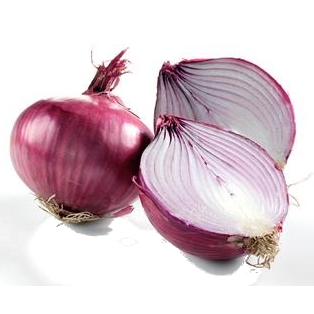Natural Remedy for Gum Disease
Gum disease, also known as periodontal disease, is a condition in which the gums, deeper supporting tissue, and potentially the bone surrounding teeth become infected and inflamed.
Gum disease starts with plaque on the teeth, a sticky white substance that coats teeth. It's formed when bacteria in the mouth mixes with saliva and residues from starchy foods and sugar in your diet.
If plaque isn't properly removed from teeth by brushing and flossing, it accumulates and hardens underneath the gumline into tartar. Once tartar builds up, it's much more difficult to remove than plaque and usually requires a cleaning at the dentist.
Over time, it can lead to inflamed gums, or gingivitis. This is a mild form of gum disease. One of the most common symptoms is darker red gums that bleed with brushing or flossing. Professional cleaning can reverse gingivitis.
See an illustration of gingivitis
If there is bleeding with pain, it is a symptom that the infection and inflammation has spread to the deeper tissues and bone, called periodontitis. After the age of 30, periodontitis is responsible for tooth loss, more so than cavities.
Symptoms of Gum Disease
- Red, swollen gums
- Bleeding while brushing or flossing
- Receding gums
- Chronic bad breath
- Loose teeth or widening space between gums and teeth
- Natural Remedies for Gum Disease
Here are seven natural remedies that are used to treat gum disease.
1) Vitamin C
The link between vitamin C deficiency and gum disease is well known. Back in the 18th century, sailors ate limes during long trips at sea to keep their gums from bleeding. A study in the Journal of Periodontology found that people with low intakes of vitamin C had higher rates of periodontal disease. Researchers looked at 12,419 adults in the United States. People who consumed less than the recommended dietary allowance (RDA) of 60 mg per day were 1.5 the risk of developing severe gingivitis as people who consumed more than 180 mg. Vitamin C is believed to help gum disease because vitamin C is an antioxidant and is needed to repair connective tissue and accelerate bone regeneration.
To boost your intake of vitamin C, eat foods rich in vitamin C, such as grapefruit, oranges, kiwi fruit, mango, papaya, strawberry, red pepper, broccoli, brussels sprouts, and cantaloupe. Vitamin C can also be taken in supplement form. Avoid chewable vitamin C, because the acidity may promote the erosion of tooth enamel over time.
2) Vitamin D
Vitamin D has been found to have anti-inflammatory effects and may reduce susceptibility to gum disease. A study by the Boston University evaluated the association between vitamin D status and gingivitis. They analyzed data from 77,503 teeth in 6700 people in the third National Health and Nutrition Examination Survey and found that people with higher blood levels of vitamin D were less likely to experience bleeding gums during gingival probing.
Sun exposure is one of the most important sources of vitamin D, because UV rays from the sun trigger the synthesis of vitamin D in skin. The National Institutes of Health Office of Dietary Supplements suggests 10 to 15 minutes of sun exposure twice a week, however the further away from the equator you live, the more polluted your city, and the more cloud cover there is, the less likely that this sun exposure will be sufficient. Look for at least 200 IU in a multivitamin.
3) Stress reduction
Stress contributes to gum disease by increasing plaque accumulation. A University of Dusseldorf study examined how exam stress would impact plaque and gum bleeding. All students had a professional tooth cleaning 4 weeks prior to exams and then 4 weeks after exams. They found that students had significantly higher rates of plaque and gingivitis after exams compared to a control group of students that didn't write exams.
Relaxation Response
Mindfulness Meditation
Diaphragmatic Breathing
4) Coenzyme Q10
There is some evidence has linking gum disease to lower levels of coenzyme q10, an antioxidant made naturally in the body, found widely in foods, and available in supplement form. Some researchers say that coenzyme q10 is needed to properly repair gum tissue. A study by Osaka University in Japan found improvement in infection and inflammation after 3 weeks of taking a topical coenzyme q10 toothpaste. You can look find toothpaste containing coenzyme q10 at natural grocers, health food stores, and online. For more information on coenzyme q10, read the Coenzyme Q10 Fact Sheet,
5) Tea tree oil
Tea tree oil has proven antibiotic properties. A topically applied tea tree oil gel was evaluated in a double-blind placebo-controlled study involving 49 people with severe chronic gingivitis. They were told to brush twice a day and were assessed after 4 and 8 weeks. The group that brushed with tea tree oil had a significant reduction in the degree of gingivitis and bleeding. However, tea tree oil gel did not reduce the amount of plaque. Use only commercial tea tree toothpaste, not tea tree oil. For more information on tea tree oil, read the Tea Tree Oil Fact Sheet.
6) Cranberry
Cranberry may help gum disease by preventing bacteria from sticking to teeth. Look for cranberry juice with no added sugar at the health food store. A typical amount is 4 ounces a day. Consult your doctor if you are taking the blood thinner warfarin or have kidney stones.




